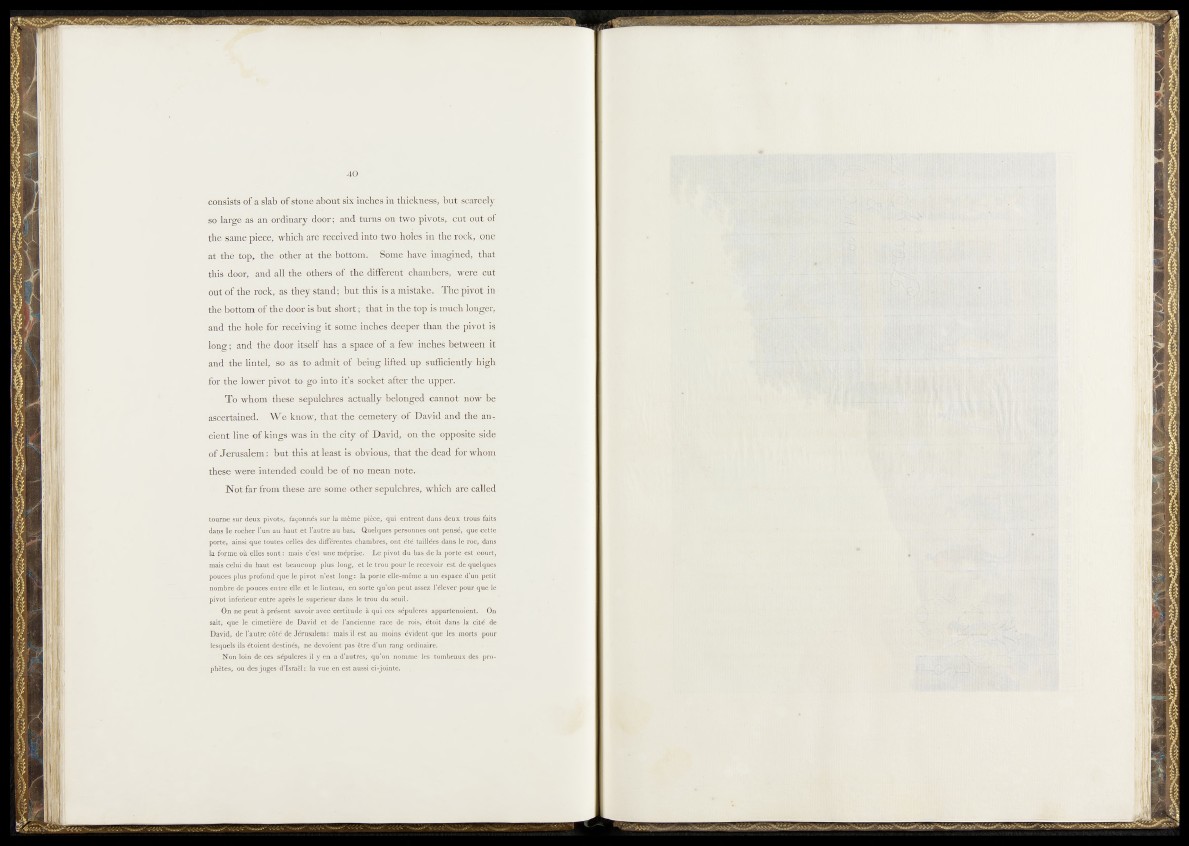
consists of a slab of stone about six inches in thickness, but scarcely
so large as an ordinary door; and turns on two pivots, cut out of
the same piece, which are received into two holes in the rock, one
at the top, the other, at the bottom. Some have imagined, that
this door, and all the others of the different chambers, were cut
out of the rock, as they stand; but this is a mistake. The pivot in
the bottom of the door is but short ; that in the top is much longer,
and the hole for receiving it some inches deeper than the pivot is
long ; and the door itself has a space of a few inches between it
and the lintel, so as to admit of being lifted up sufficiently high
for the lower pivot to go into it’s socket after the upper.
To whom these sepulchres actually belonged cannot now be
ascertained. We know, that the cemetery of David and the ancient
line of kings was in the city of David, on the opposite side
of Jerusalem: but this at least is obvious, that the dead for whom
these were intended could be of no mean note.
Not far from these are some other sepulchres, which are called
tourne sur deux pivots, façonnés sur la même pièce, qui entrent dans deux trous faits
dans le rocher l’un au haut et l’autre au bas. Quelques personnes ont pensé, que cette
porte, ainsi que toutes celles des différentes chambres, ont été taillées dans le roc, dans
la forme où elles sont : mais c’est une méprise. Le pivot du bas de la porte est court,
mais celui du haut est beaucoup plus long, et le trou pour le recevoir est de quelques
pouces plus profond que le pivot n’est long: la porte elle-même a un espace d’un petit
nombre de pouces entre elle et le linteau, en sorte qu’on peut assez l’élever pour que le
pivot inferieur entre après le supérieur dans le trou du seuil.
On ne peut à présent savoir avec certitude à qui ces sépulcres appartenoient. On
sait, que le cimetière de David et de l’ancienne race de rois, étoit dans la cité de
David, de l’autre côté de Jérusalem : mais il est au moins évident que les morts pour
lesquels ils étoient destinés, ne dévoient pas être d’un rang ordinaire.
Non loin de ces sépulcres il y en a d’autres, qu’on nomme les tombeaux des prophètes,
ou des juges d’Israël: la vue en est aussi ci-jointe.